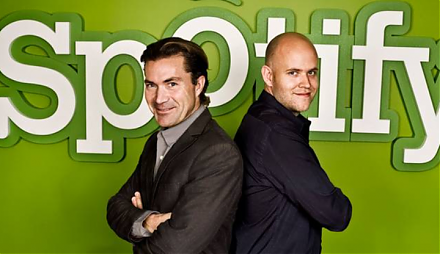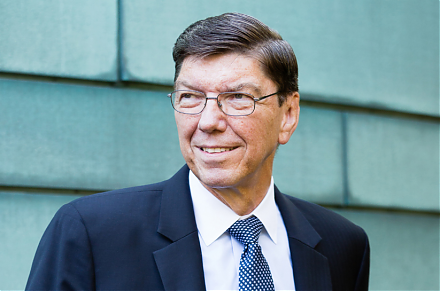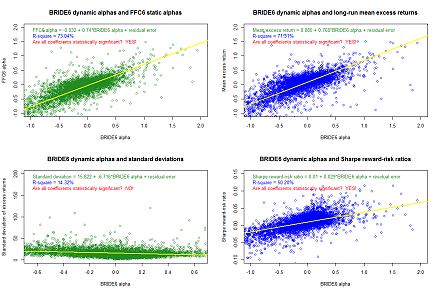

2020-08-26 10:33:00 Wed ET
technology lean startup team leaders specialists advisors iterative continuous improvements culture changes perseverance resilience senior managers growth core business operations disruptive innovation purpose vision mission sustainable profitability values beliefs business builders life metaphors
Through purposeful leadership, senior managers inspire teams to reach heights of both innovation and profitability with great brand identity and customer loyalty.
Clive Wilson (2015)
Designing the great purposeful organization: how to inspire business performance beyond boundaries
Through the joint principles of purposeful leadership (purpose, vision, engagement, structure, character, outcome, success, and talent etc), business co-founders and senior managers inspire all team members to reach new heights of both innovation and profitability with great brand identity and customer loyalty. For any successful business organization, the pivotal fulcrum is purpose. Both co-founders and senior managers must anchor corporate strategies in a unique sense of purpose in order to build creative corporate brands. Purpose serves as a key reference point for all necessary business decisions and policies. Visionary business leaders can often match core values and beliefs to actionable business insights and solutions in light of both current and future challenges. At the same time, these visionary business leaders can often deepen the unique sense of both purpose and character as the business organization continues to rise to these challenges over time.
Senior business leaders must devise a prescient business plan with key actionable insights and solutions. These insights and solutions must emphasize learning from mistakes and experiments. Iterative continual improvements and positive changes help most team members derive valuable major lessons from the broader business ecosystem. The new and nonobvious SECI model provides a technical breakdown of the sequence of Socialization, Externalization, Combination, and Internalization. All team members socialize and circulate their high-skill expertise and institutional knowledge for better team work outcomes. In response to specific external threats and forces, both business leaders and senior managers combine their team efforts to solve practical problems in the broader business context. Through both iterative continuous improvements and even culture shocks and changes, business leaders and their team members internalize these unique professional experiences so that these experiences become part of corporate strategies and actionable solutions in light of both current and future challenges.
Most business organizations depend on the wider fractal ecosystems for survival. Corporate character emerges from its organizational culture. Purpose and servant-leadership serve as the main points of inspiration for corporate character. Business leaders and top managers often strive to align the corporate statement of purpose well with strategic insights, decisions, solutions, and policies. Purpose drives core objectives and key results (OKRs) and key performance indicators (KPIs). All team members share their common sense of both purpose and vision around the main subjective ambitions of all stakeholders.
The corporate statement of purpose matches meaningful core values and beliefs with actionable business insights and solutions over time.
Purpose is the core anchor of most successful business organizations. Purposeful brands exhibit focus, confidence, differentiation, and positive energy. Purpose can be a contextual element of most corporate strategies that provide a major test point for each unique business decision or action. Also, corporate purpose helps specify the long-term vision that inspires most stakeholders at each level with a new nexus of relations in the broader business context. Both business leaders and managers help strengthen their internal teams and outside strategic partnerships through the bond of clear purpose. At the same time, most team members can bridge personal and professional differences through a common sense of mutual purpose. Service is the main motivation for corporate purposes in most business organizations.
Purpose informs the past and the present, but vision defines the future. Visionary leaders such as Steve Jobs, Bill Gates, and Elon Musk inspire their team members by embracing the future unknown territory as the team members continue to work pragmatically on their day-to-day tasks. These great business leaders look ahead to imagine revolutionary and even disruptive products and services to tune into the hearts and minds of stakeholders such as customers and suppliers.
Visionary business leaders own the corporate statement of purpose and so accept responsibility for this key statement. Apple strives to challenge the status quo with great mobile devices such as iPhones and iPads. Facebook tries to connect people to make the world become better and safer with greater social mobile movements. Microsoft designs and refines software suites for every PC user. Amazon attempts to facilitate online sales, mobile payments, and cloud services for individual buyers, third-party sellers, and small-to-medium enterprises etc. Google tries to monetize Internet search and cloud software to bring information to global users at the click of a button. Tesla applies lean methods to produce electric cars with better features for auto lovers. SpaceX collaborates with NASA and U.S. Defense Department to send astronauts to the International Space Station with new scientific experiments from month to month. All these successful business organizations learn from major mistakes, errors, and even epic failures etc before these companies can carve out a fantastic future for their users, customers, and most other stakeholders. Humble servant-leadership, good and strong will, perseverance, lean design, and iterative continuous improvements become essential and important in this context.
The broader business ecosystem empowers all team members to learn from their own errors, mistakes, and even epic failures.
Just as cells and organisms learn and evolve through both growth and experience, most business organizations go through cycles of mistakes, failures, and iterative continuous improvements over time. This virtuous cycle relates to the SECI model, which shows the sequential process of Socialization, Externalization, Combination, and Internalization. Business leaders, senior managers, and their team members first socialize and circulate their high-skill expertise and institutional knowledge for better team endeavors. In response to external threats and forces, both business leaders and senior managers combine team efforts to solve practical problems in the broader business context. Through key iterative continuous improvements and even culture shocks and changes, both business leaders and their team members internalize these unique experiences such that these experiences become part of both corporate strategies and actionable solutions in light of current challenges. In time, most business organizations rise to these challenges to meet new customer demands in blue-ocean markets. Both business leaders and their team members engage, learn, apply, and then sustain their major corporate strategies to enhance overall business performance with better and closer stakeholder relationships.
The universe is fractal in nature. Patterns exist intrinsically in most subject matters such as stakeholder relationships and corporate productivity gains. Life can adapt systematically to its wider environment. In a similar vein, the business organization must adapt its team dynamism and talent retention to the current business climate. At the same time, the conscious mind only grasps a small fraction of overall reality. Both business leaders and their team members must be mindful to better organize internal systems and processes to ensure the continuation of both organic growth and institutional knowledge. Structural reforms organically emerge from the needs and capacities of a given business organization. These structural reforms require ubiquitous simplicity, minimalism, lean startup mentality, and systemic visibility. In practice, most business systems and processes should remain simple and intuitive enough for both business leaders and their team members to apply the lean startup method with iterative continuous improvements and positive incremental changes. Senior managers often need to eliminate obsolete business methods and systems in a cost-effective manner. Effective business systems should remain highly visible such that senior managers can avoid reinventing the wheel. Both business leaders and senior managers empower key team members to carry out their tasks and jobs with little or minimal interference. Most team endeavors can come to fruition in due course. Fractal patterns often inform both business leaders and senior managers of emergent customer needs, pain points, and disruptive innovations in blue-ocean markets. These iterative continuous improvements help secure the product-market fit over the long run.
Both business leaders and senior managers craft and adapt their unique corporate statement of purpose to mold organizational culture, character, vision, and purpose.
Every person builds and molds his or her character through trials and tribulations. Likewise, every business organization needs to cultivate its unique organizational culture. Both business leaders and senior managers craft, apply, adjust, and then adapt their unique corporate statement of purpose to mold organizational culture, character, vision, purpose, and so forth. This strategic alignment between purpose and culture focuses on a wide range of human instincts from survival to service.
Senior leadership exerts a profound impact on culture. Both business leaders and senior managers can assess key values and beliefs with respect to culture in terms of cultural entropy, which takes into consideration negative values and beliefs held by stakeholders in a given business organization. It is important for both business leaders and senior managers to draw a key distinction between slogans and values. Words and slogans can often inspire people, but these words and slogans may fall short of the power of both authentic actions and social movements. Several cultural characteristics are necessary for senior business leaders and managers to build a purposeful business organization. These cultural characteristics can often include altruism, creativity, curiosity, innovation, trust, support, perseverance, and purpose. From time to time, corporate culture often reflects the core values and beliefs of its stakeholders. Both business leaders and senior managers should learn to connect their central values and beliefs to the broader culture and purpose of the business organization. In effect, the character and culture of executive board members can trickle down to the rest of the business organization.
Senior business leaders often need to communicate corporate purpose to all team members for better balance and harmony. These leaders effectively translate the unique statement of purpose into the longer-term equilibrium business vision. Both business leaders and senior managers take time to achieve team work outcomes, objectives and key results (OKRs), and key performance indicators (KPIs) etc to measure distance away from the longer-term business vision. These performance targets help determine the best way for most business leaders to represent the key results and team work outcomes. On a periodic basis, both business leaders and senior managers spend time sharing these key work results with all relevant team members, key customers, and other stakeholders such as upstream suppliers and third-party service providers. Senior business leaders often need to ensure better alignment between corporate purpose and team culture. In due course, this close alignment helps formulate a unique business story with positive customer feedback. Both business leaders and senior managers can integrate incremental small wins and major milestones into the endless positive feedback loop of both successes and setbacks with iterative continuous improvements over time.
Business success is often more than some personal experience that emerges from the rare unique skills and characteristics of team members. Through the integrative application of purpose, vision, and servant-leadership, key business success often transcends some personal experience and then becomes institutional knowledge for teams, communities, and organizations. Over time, all the team members share this institutional knowledge to experience favorable work outcomes as these team members repeat and reiterate the positive feedback loop of iterative continuous improvements. In this unique fashion, these team members internalize key results as these results gradually snowball into greater institutional knowledge.
Both business leaders and senior managers must take time to celebrate small wins and major milestones to help smooth the way through a firm commitment to longer-term business vision and purpose. Empathy often emerges from team interactions because each person has a natural instinct to share his or her experiences. In due course, emotional connections between most stakeholders contribute to the long-term business vision, purpose, and team work. Instead of participating in the war for talent that pits one company against another in an incessant bid for keeping the best personnel, senior business leaders should focus on nurturing talent retention and development. In this important way, senior business leaders liberate individual skills and talents through a series of systematic steps. In these incremental steps, these leaders recognize, value, develop, and match skills and talents with specific tasks and jobs. Mutual engagement can help ignite fresh talents and skills through positive dialogues between senior managers and individual team members. Talent alignment helps connect both skills and resources to positive team work outcomes and accomplishments. Again, it is important for senior business leaders to convey the long-term business vision and purpose through this iterative continuous talent alignment.
Most business organizations can be quite fractal in nature. Their internal business processes, systems, and structures are applicable at various levels. Both business leaders and senior managers often take specific actions to communicate the long-term business vision and purpose with core values and beliefs along the arduous journey. Through the sequential selection of core values, beliefs, and missions etc, the business organization molds its internal culture, character, purpose, and vision to attain a more profitable stature that reflects both the needs and desires of all its stakeholders. It would be better for both business leaders and senior managers to keep corporate purpose at the center of action for rising to some future challenges in terms of long-term sustainable and disruptive innovations, distinctive capabilities, core competences, competitive moats, and first-mover advantages.
In his popular non-fiction book The Purpose Driven Life, Rick Warren explains how our life metaphors and perspectives shape our lives. How we define life determines our destiny. These perspectives can often influence how we invest our time, spend our money, use our talents, and value our relationships. People view life as a circus, a minefield, a roller coaster, a puzzle, a symphony, or a journey. People have said: *Life is a carousel; sometimes we are up, sometimes we are down, and sometimes we just go round and round;* or *Life is a triple-speed bicycle with gears that we never use;* or *Life is a game of cards, and we have to play the hand that we are dealt.* Our unspoken life metaphors reflect our values, beliefs, expectations, relationships, goals, and priorities. For instance, if we think life is a party, the primary value in life would be having fun. If we think life is a race, we would value speed so much that we might be in a hurry most of the time. If we regard life as a marathon, we would value endurance and perseverance. If we view life as a battle, it would be important for us to win.
Warren offers 3 informative life metaphors: life is a test; life is a trust; and life is a temporary assignment. Life can be viewed as a test in the sense that we often go through many trials and tribulations as God tests our faith, love, character, integrity, obedience, or loyalty etc. For instance, God tested Abraham by asking him to offer his son Isaac. God tested Jacob when he had to work several more years to earn Rachel as a wife. Adam and Eve failed their test in the Garden of Eden, and David failed his tests on several occasions; but the bible offers many examples of people who passed great tests (such as Joseph, Ruth, Esther, and Daniel). We reveal our character through these tests in life. God watches our reaction to people, problems, conflicts, achievements, setbacks, and disappointments. God even watches some simple actions when we open the door for others, when we pick up a piece of trash, or when we are polite toward a clerk or a waitress. At the same time, we may need to go through major changes, disruptions, broken promises, impossible problems, unfair criticisms, and even senseless tragedies.
An important test pertains to how we act when we cannot feel the divine presence of God in our lives. Sometimes God intentionally draws back, and we can no longer sense his presence. In ancient times, the king Hezekiah experienced this main test. God withdrew from Hezekiah in order to test him to see what was really in his heart. Hezekiah had enjoyed a close fellowship with God. At a crucial and pivotal point in his life, God left Hezekiah alone to test his character. In the meantime, God wanted to reveal his weakness, and then God prepared Hezekiah for greater responsibility.
When we start to view life as a test, we can come to the realization that nothing is insignificant in life. Even the smallest incidence has significance for our character development, every single day is an important day, and every second is a growth opportunity for us to deepen our love, faith, character, vision, and dependence on God. The good news is that God wants us to pass the myriad tests of life, so God never allows these tests to be greater than his love and grace for us. In effect, God keeps his promise, and God cannot permit the tests of life to be beyond our power to remain firm. God gives us the strength to endure the tests of life so that we can find an important way out. When we pass the tests of life, we can receive the crown of life that God has promised to us.
Life can further be regarded as a trust. Our time, energy, intelligence, opportunities, relationships, and resources are all gifts from God that he entrusts to both our care and management. We are stewards of these unique gifts and talents from God. In fact, this concept of stewardship begins with the universal view that God provides these gifts, talents, and resources etc for our effective servant-leadership on earth. God owns everything and everyone on earth. We never really own anything during our brief stay on earth. God empowers all people to make productive use of these gifts, talents, and resources through our individual life journeys. With clear purpose, we can serve as faithful stewards and ambassadors for God (just as founders and entrepreneurs strive to fulfill their bold goals of a fantastic future for humankind).
Life can be metaphorically viewed as a temporary assignment. The bible teaches us the brief, temporary, and transient nature of life on earth. Some poets describe life as a mist, a fast runner, a breath, and a wisp of smoke. In comparison to eternity, life is extremely brief. Our earth is only a temporary residence. Life on earth is like temporarily living in a foreign country. Our earth is not our permanent home or final destination. We just pass through the tests of life during our brief time on earth. In practice, we live our current time as temporary visitors, travelers, and residents on earth. Over time, we can come to the realization that our social identity is in eternity as our homeland is in heaven. With this realization, our life purpose motivates our core values, beliefs, goals, priorities, and lifestyles.
Most business cofounders and entrepreneurs can enjoy life, liberty, and the pursuit of happiness. After all, life is a test, a trust, and a temporary assignment. We need to make productive use of our faith, love, time, energy, gifts, talents, and resources etc from God to help enrich the lives of others. The fact that earth is not our ultimate home explains why we can experience sorrow, rejection, and difficulty in this world. This fact also explains why we sometimes experience broken promises and unfair circumstances. Such life challenges are not the end of the story. From time to time, God allows us to feel a significant amount of both discontent and dissatisfaction in life. We cannot be completely happy because earth is not our final home. We need to strive to achieve better and bigger life purposes to help one another.
The Hebrew phrase Tikkun Olam means world repair. In modern Christian circles, Tikkun Olam has become synonymous with the meaningful notion of constructive social actions that contribute to a better world. God provides us with fire and wheat so that we can come up with bread. In a similar vein, God provides us with fire and clay so that we can bake the bricks ourselves. In this unique way, we can become partners in completing the act of creation. In this positive light, our time on earth is important. We are not just passive observers, but also active participants in helping make the world a better place. Christians bear a sense of individual responsibility in accordance with the concept of Tikkun Olam. In the modern age, entrepreneurs share the same sense of individual responsibility for their special advisors, senior specialists, and many other team members to make positive contributions to enrich the lives of others. From time to time, many founders and entrepreneurs must learn to reconcile what they want with what they can risk in order to accomplish their big long-term goals. In this important way, these business founders and entrepreneurs pass the tests of life, fulfill lofty social causes and purposes, and make productive use of both talents and gifts from God in accordance with his love and grace.
This analytic essay cannot constitute any form of financial advice, analyst opinion, recommendation, or endorsement. We refrain from engaging in financial advisory services, and we seek to offer our analytic insights into the latest economic trends, stock market topics, investment memes, personal finance tools, and other self-help inspirations. Our proprietary alpha investment algorithmic system helps enrich our AYA fintech network platform as a new social community for stock market investors: https://ayafintech.network.
We share and circulate these informative posts and essays with hyperlinks through our blogs, podcasts, emails, social media channels, and patent specifications. Our goal is to help promote better financial literacy, inclusion, and freedom of the global general public. While we make a conscious effort to optimize our global reach, this optimization retains our current focus on the American stock market.
This free ebook, AYA Analytica, shares new economic insights, investment memes, and stock portfolio strategies through both blog posts and patent specifications on our AYA fintech network platform. AYA fintech network platform is every investor's social toolkit for profitable investment management. We can help empower stock market investors through technology, education, and social integration.
We hope you enjoy the substantive content of this essay! AYA!
Andy Yeh
Chief Financial Architect (CFA) and Financial Risk Manager (FRM)
Brass Ring International Density Enterprise (BRIDE) ©
Do you find it difficult to beat the long-term average 11% stock market return?
It took us 20+ years to design a new profitable algorithmic asset investment model and its attendant proprietary software technology with fintech patent protection in 2+ years. AYA fintech network platform serves as everyone's first aid for his or her personal stock investment portfolio. Our proprietary software technology allows each investor to leverage fintech intelligence and information without exorbitant time commitment. Our dynamic conditional alpha analysis boosts the typical win rate from 70% to 90%+.
Our new alpha model empowers members to be a wiser stock market investor with profitable alpha signals! The proprietary quantitative analysis applies the collective wisdom of Warren Buffett, George Soros, Carl Icahn, Mark Cuban, Tony Robbins, and Nobel Laureates in finance such as Robert Engle, Eugene Fama, Lars Hansen, Robert Lucas, Robert Merton, Edward Prescott, Thomas Sargent, William Sharpe, Robert Shiller, and Christopher Sims.
Follow AYA Analytica financial health memo (FHM) podcast channel on YouTube: https://www.youtube.com/channel/UCvntmnacYyCmVyQ-c_qjyyQ
Follow our Brass Ring Facebook to learn more about the latest financial news and fantastic stock investment ideas: http://www.facebook.com/brassring2013.
Free signup for stock signals: https://ayafintech.network
Mission on profitable signals: https://ayafintech.network/mission.php
Model technical descriptions: https://ayafintech.network/model.php
Blog on stock alpha signals: https://ayafintech.network/blog.php
Freemium base pricing plans: https://ayafintech.network/freemium.php
Signup for periodic updates: https://ayafintech.network/signup.php
Login for freemium benefits: https://ayafintech.network/login.php
If any of our AYA Analytica financial health memos (FHM), blog posts, ebooks, newsletters, and notifications etc, or any other form of online content curation, involves potential copyright concerns, please feel free to contact us at service@ayafintech.network so that we can remove relevant content in response to any such request within a reasonable time frame.
2018-10-09 08:40:00 Tuesday ET

The International Monetary Fund (IMF) appoints Harvard professor Gita Gopinath as its chief economist. Gopinath follows her PhD advisor and trailblazer Kenn
2018-01-08 10:37:00 Monday ET

Spotify considers directly selling its shares to the retail public with no underwriter involvement. The music-streaming company plans a direct list on NYSE
2020-04-17 07:23:00 Friday ET

Clayton Christensen defines and delves into the core dilemma of corporate innovation with sustainable and disruptive advances. Clayton Christensen (2000)
2023-01-03 09:34:00 Tuesday ET

USPTO fintech patent protection and accreditation As of early-January 2023, the U.S. Patent and Trademark Office (USPTO) has approved
2022-11-05 11:32:00 Saturday ET

CEO overconfidence and corporate performance Malmendier and Tate (JFE 2008, JF 2005) argue that overconfident CEOs are more likely to initiate mergers an
2017-10-15 07:38:00 Sunday ET

Ivanka Trump and Treasury Secretary Steven Mnuchin both press the case for GOP tax legislation as economic relief for the middle-class without substantial t